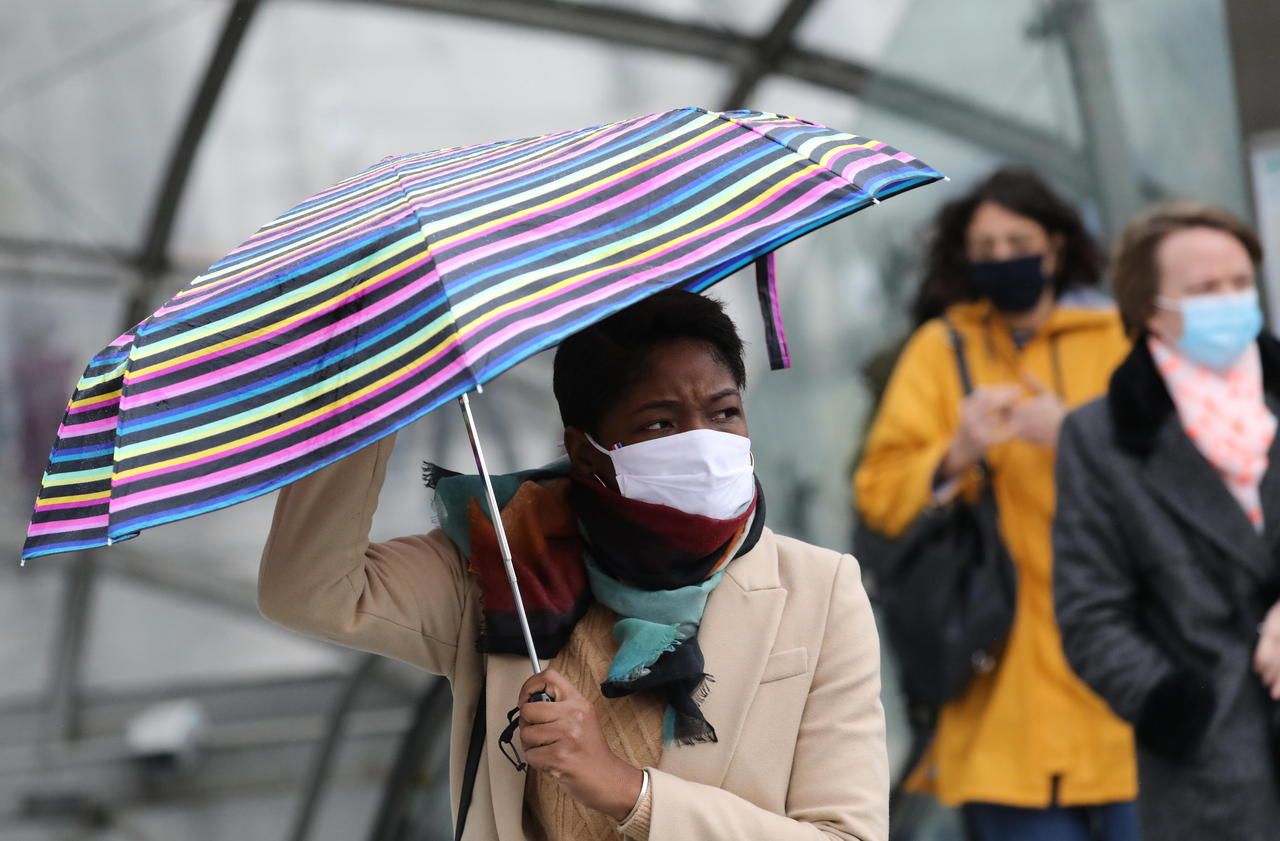Outside, the rain keeps falling.
September is barely over when we are already shivering, hastily pulling out our winter coats.
A single desire, to cozy up at home with family, friends.
And without knowing it, with the coronavirus.
He is just waiting for this to spread, closed places, closed windows and filled world.
This is how gloomy weather precipitated the epidemic.
Everything changed in ten days.
It is precisely between "1 and 12 October", evaluated the Prime Minister, that a "sudden and spectacular acceleration of the epidemic" took place.
The cases soar, passing, in this period of time, from 107 infected people per 100,000 to 190. Some cities are breaking records: 500 in Lille and Saint-Etienne, nearly 400 in Paris.
However, after a difficult summer, a slight lull was felt at the end of September in Bordeaux, Nice, or Rennes.
A “slowdown phase”, says Jean Castex, which was short-lived.
One figure is worth all the speeches: nationally, contamination has jumped, + 53% in one week.
But how did we come to this?
To these drastic measures, to this curfew that puts 20 million French people to sleep at 9 p.m.
VIDEO. Covid-19: curfew between 9 p.m. and 6 a.m. in Ile-de-France and in 8 metropolises, from Saturday
The summer brake has released
Several factors can collectively plead guilty.
Already, if the virus continued to circulate quietly this summer, the fact of living more outside has hampered its progress.
"A double braking system held it back, the barrier gestures and the summer climate," decrypts the public health specialist, Antoine Flahault.
With the return of the cold, this last brake has released, ”causing the epidemic to descend faster than expected in our homes.
Fortunately, according to the epidemiologist, the preservation of barrier measures makes it possible to limit breakage, and to contain the famous R0 - the one which says how much an infected person will infect others - at 1.3 against 3 at the height of the crisis.
But here too, if the mask has imposed itself on their face, the French are increasingly neglecting other ramparts.
At the end of September, only 32% admitted to avoiding regroupings against more than 60% at the end of May.
READ ALSO>
Covid-19 and flu: why doctors fear an explosive cocktail
And the hugs, abandoned in the spring, returned to the favor of the fall.
“The measures were not adopted in the same way depending on age.
26% of 18-34 year olds said they respected social distancing at the end of September against almost 40% among the oldest ”, explains Sophie Vaux, epidemiologist at Public Health France.
A cold never seen since 1974
In this relaxation, the virus has played its part, taking advantage of the end of the summer holidays and the return to work.
“We saw a
re-entry effect
,” confirms the specialist.
And suddenly, to make matters worse, the mercury dropped.
“It was very cold between late September and early October.
We had not known such temperatures at this period since 1974 ”, suggests Olivier Proust, forecaster at Météo France.
Endless showers were added on the western facade, swept by storm Alex, then in the Alpes-Maritimes.
In the jargon, this is referred to as a “cold blocking period of altitude”, including below normal temperatures and heavy rain.
Newsletter - Most of the news
Every morning, the news seen by Le Parisien
I'm registering
Your email address is collected by Le Parisien to enable you to receive our news and commercial offers.
Learn more
Faced with this surge, everyone tended to take refuge in closed places.
"Everything cannot be attributed to the weather, but it has contributed to the spread of the virus", summarizes Sophie Vaux.
Although partially resolved today, the staggering delays that we have experienced in doing a test and getting its results, have also allowed the virus to slip away.
Infected people, often asymptomatic, have remained in nature - or rather in transport, businesses, parties ...
Over 44% of cases in Europe
In these comfortable conditions for him, the virus has made its bed, and the epidemic has flared up in all regions, all age groups.
If young people remain the most affected, the virus infiltrates at high speed among the oldest (+ 64% of cases among those over 65 in one week).
And the Ehpad wins a little more.
With 44% more cases in Europe, there is nothing Franco-French in the situation, even if France is in fourth place in the Old Continent in terms of incidence (the number of people infected per 100,000 inhabitants), after the Czech Republic, the Netherlands and Belgium.
“The virus started from southern Europe, reached France, then Benelux, the United Kingdom, Germany, Italy, Sweden…” lists Antoine Flahault.
Today, only Finland, Turkey, Greece or Estonia are resisting.
Until when ?
“Probably not for long, the expert has no illusions.
A bit like in Ravel's Bolero, countries take turns in the epidemic.
"
READ ALSO>
Locations, criticality, size ... all about the 1500 active clusters in France
In mathematics, this curve which accelerates until it becomes dizzying has a name: the exponential. "It's an explosive situation," decrypts Flahault. If the explosion happened, does that mean the worst is behind us? The response of epidemiologist Sophie Vaux leaves little hope. “There is no reason to say today that the epidemic will calm down immediately. "

